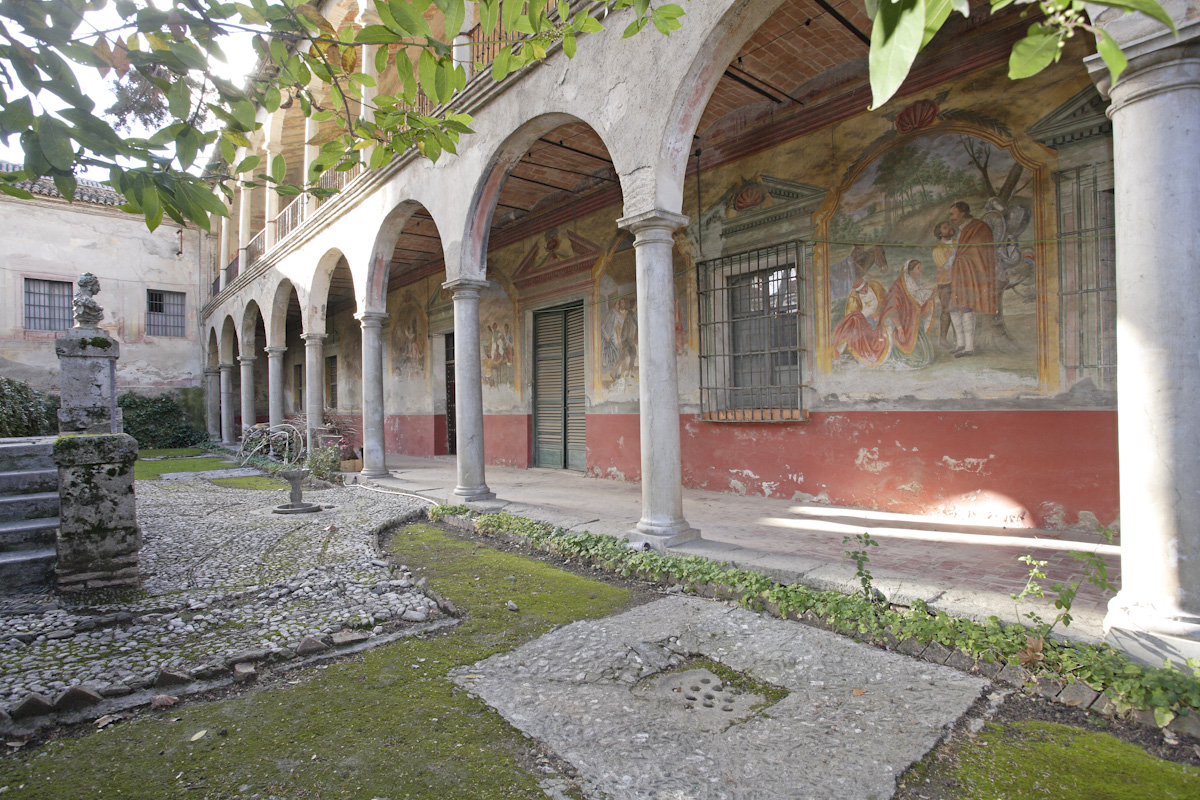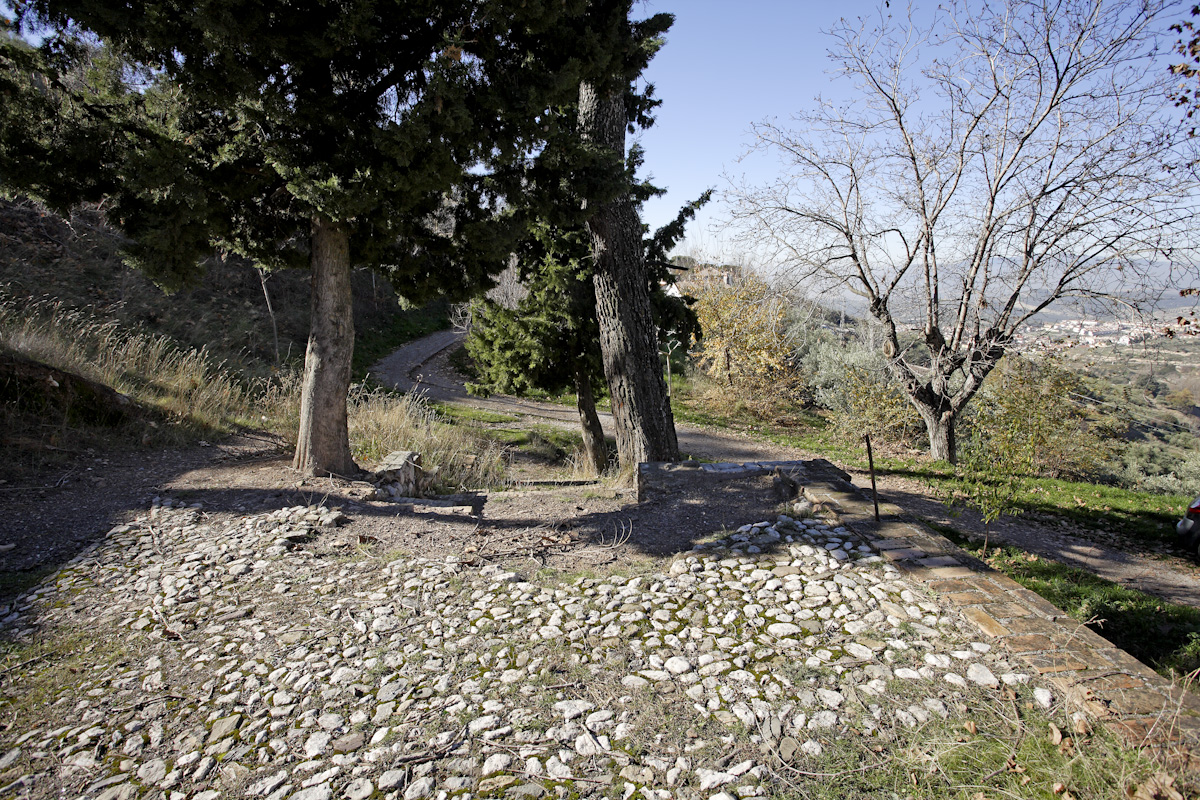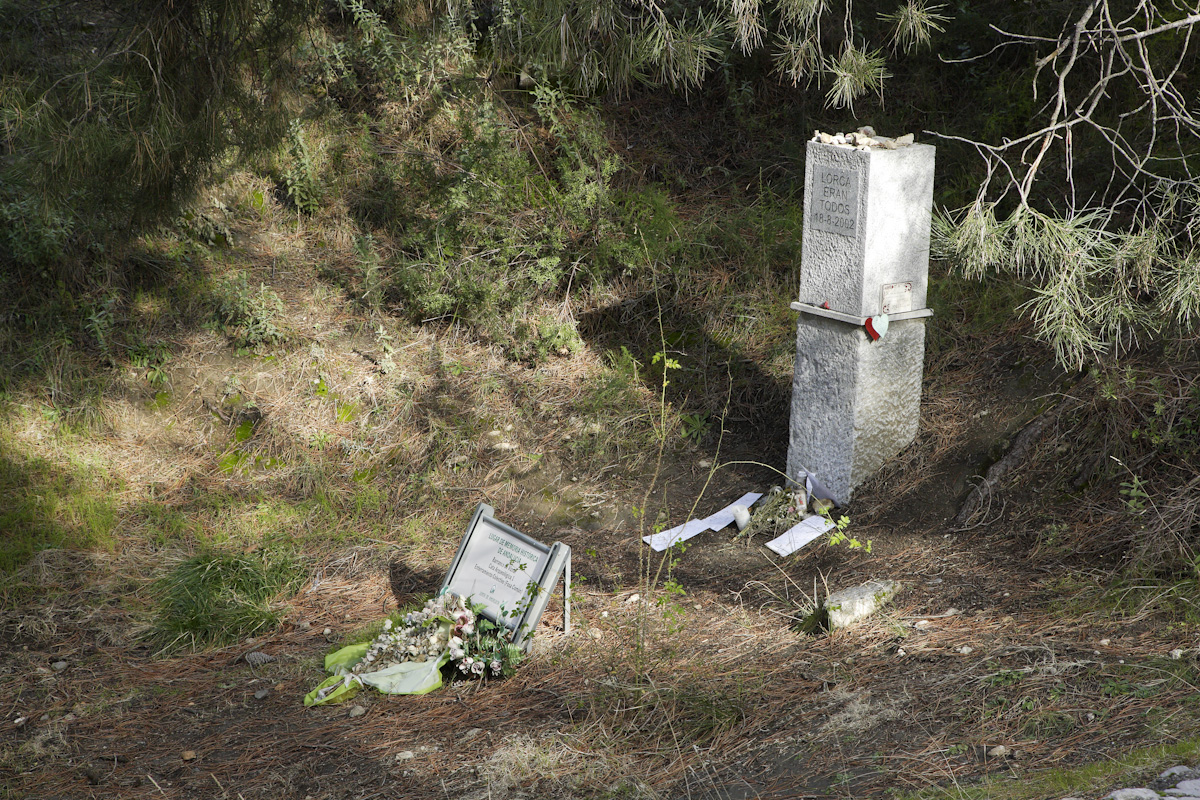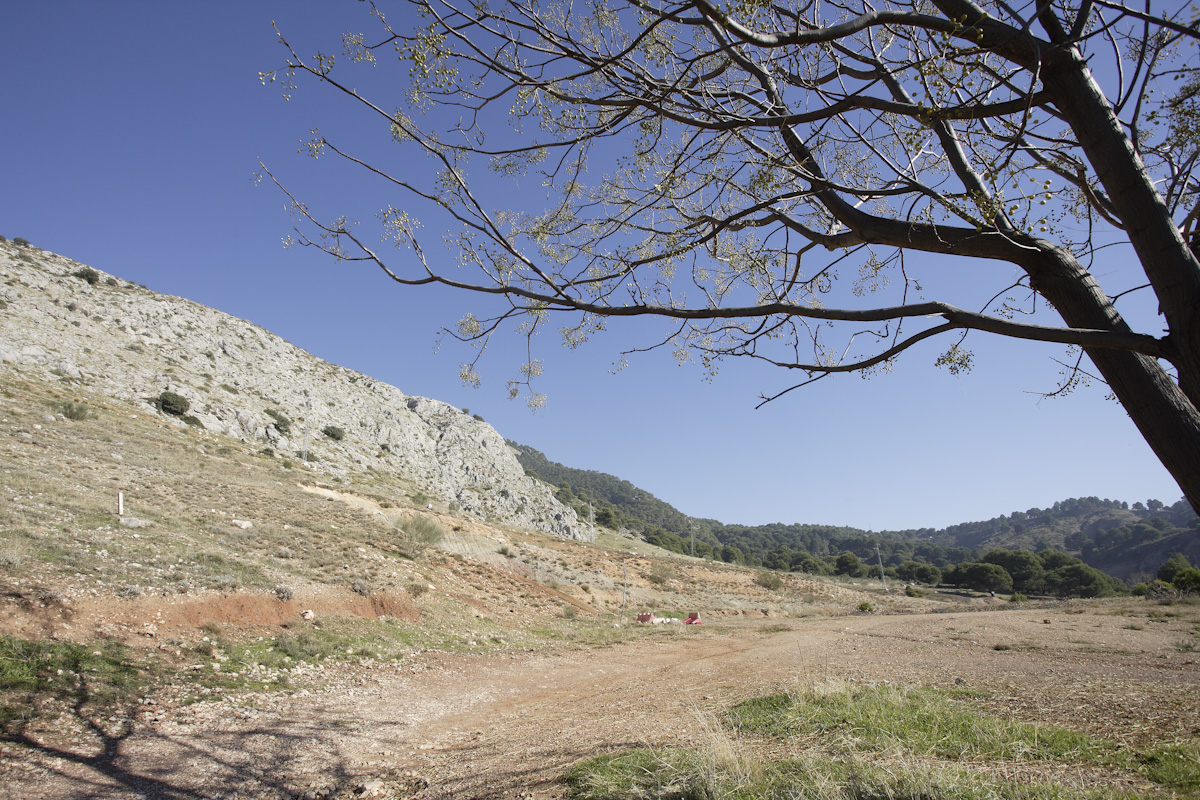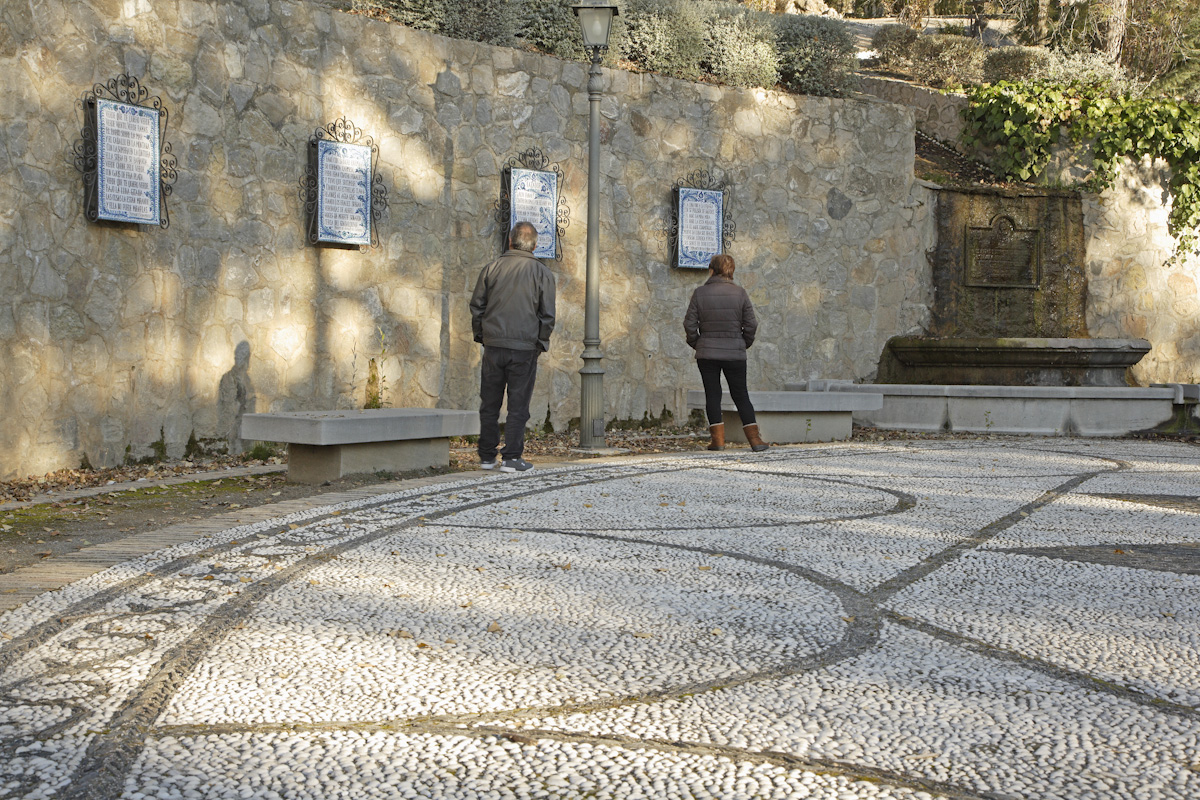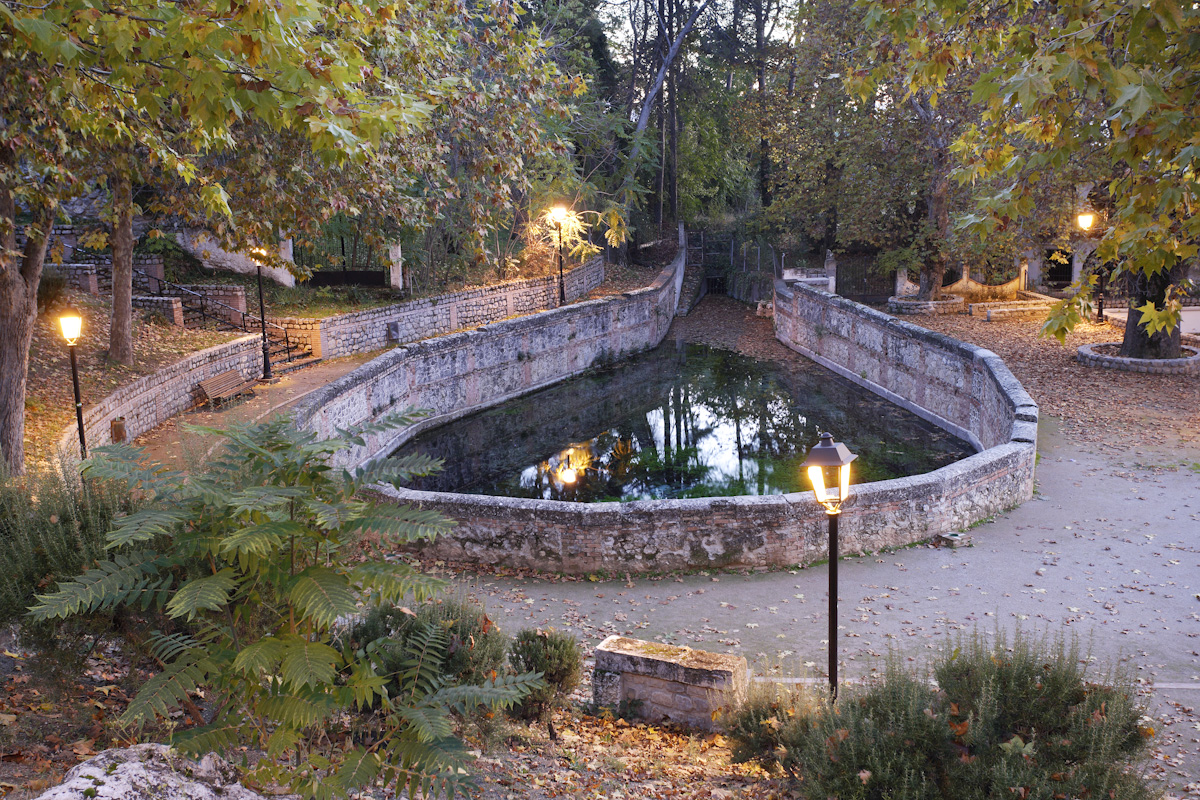This route, ideal for walking, is a pleasant walk free of difficulty between the villages of Víznar and Alfacar. It covers the main places associated with the last moments of the life of Federico García Lorca and his murder.
Route data
- ROUTE LENGTH:
- 3 kilometers
- ESTIMATED DURATION:
- 2 hours (45 minutes walking)
- HOW TO DO IT:
- On foot Download
Places that make up the route
From August 1936, Víznar became one of the bloodiest places of repression in Granada. The palace, located in the center of the town, was occupied after the military uprising by the factional forces to direct troop movements and repel incursions by Republican forces.
Little remains of the historic building demolished in the 1970s, which was a children’s camp during the Republic and ended up transformed into an ignominious prison after the uprising of 1936. Hundreds of reprisals spent their last hours here, among them García Lorca, before being executed in the nearby ravines.
It is an area covered by thick pine forests of repopulation, which allowed to cover the graves after the mass executions committed from July 1936 in Granada. The ravine is full of mass graves of all sizes, where thousands of people were buried in retaliation for their sympathies with the Republic.
In this place, a troop camp at the beginning of the Civil War, searches for Lorca’s body were carried out in 2014 and 2016 with unsuccessful results. Several researchers and witnesses agree that Federico and his platoon mates were executed and buried here in the early morning of August 17 or 18, 1936.
It was inaugurated in 1986 by the Diputación de Granada to pay homage to Federico in the place where it was believed he was killed along with his three companions and to remember all the people shot in a wide strip of land from Alfacar to Víznar, now marked as a place of Historical Memory.
This spring, near the area of executions of the Civil War, is symbolically linked to those dramatic moments for morphological reasons: The water emerges in small bubbles reminiscent of tears and the source has a lenticular shape, drop or even eye, which reinforces the association with crying.
The story of the last days of Federico García Lorca, those between August 9 and 17, 1936, begins in Granada, in a peaceful and central bourgeois house owned by a respected merchant, father of seven children, most linked to Falange; it continues in another much more decrepit and sinister property about 300 meters away, the former Civil Government, and culminates in a bloody way in Alfacar and Víznar, two small towns located only ten kilometers from the capital where the rebels first established the head of the northwest sector at the beginning of the war and, second, created the largest center for the extermination of left-wing sympathizers. A halo of domestic normality merges with one of unbridled hatred: the old peaceful neighborliness transformed into murderous abhorrence.
The murder of García Lorca, like that of thousands of others through no fault of their own other than their ideological inclinations, was a political crime. Personal hatreds resulting from envy and family quarrels were only incidental eventualities. The trigger for the murder was ideological. The itinerary that goes from the escape to the death comprises a few scenarios and a few machinations and complicities. First, the home of the Rosales family, on Angulo Street, today transformed into a quiet hotel full of travelers. Then, the Civil Government of Granada which, from the first days of the war, became an administrative center of terror. The space occupied by the room where Federico spent the hours before his death paradoxically coincides with the current site of the Department of Constitutional Law of the Faculty of Law.
The roads where he was shot, however, in Víznar and Alfacar, have not undergone such pleasant changes. The road linking the two towns is now a place frequented by walkers and sportsmen. But despite the thriving beauty of the landscape, a rare sense of regret and funereal grandeur prevails. The visitor has the same sensation as when visiting a civil cemetery. Along two kilometers remain the symbolic places, such as the Las Lágrimas or Fuente de Aynadamar, linked since the early days of the war with the murder; the Barranco de Víznar itself, where thousands of people fell, full of funeral echoes and repopulation pines planted to hide the graves. There is also the Peñón del Colorado, the space where Franco’s troops were trained and received with honors to the pro-men of the Regime. Of La Colonia, the children’s vacation building converted into a place of confinement for those condemned to death, where only a few ruins remain.
These are the vestiges of the past. Of the present remains, as a counterpart, the Federico García Lorca Park, built by democratic institutions next to the old olive tree where the remains of the poet and his fellow executioners were supposed to be. They looked for them but, as he predicted in his verses, they did not find them. Perhaps because Lorca and the great tragedy that took place there occupy the whole area and are so close that they are only apprehensible to one’s sorrowful memory.
